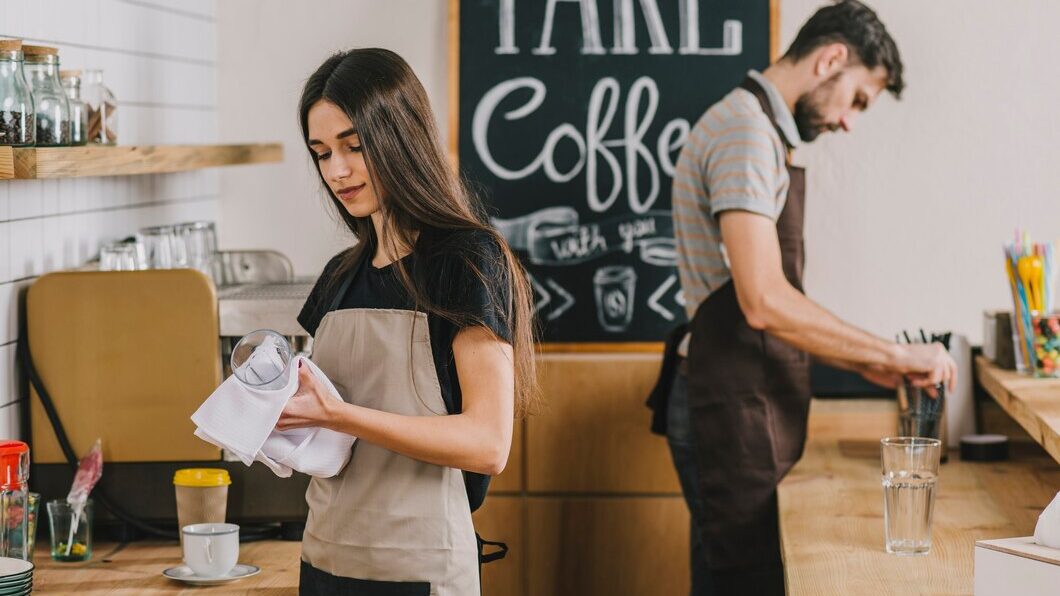Opening a cafe can be an exciting and rewarding experience, but it requires careful planning and preparation. Before you dive in headfirst, there are a few things you need to consider to ensure the success of your venture. This article will explore some essential tips on opening a cafe and what you need to know before opening.

Research The Coffee Business
Opening a cafe shop requires careful planning and research. The most important aspect of opening a cafe is understanding the coffee business. This means researching everything from coffee bean sourcing to brewing methods and customer preferences.
To begin with, it’s essential to research coffee bean suppliers in your area or online. Sourcing high-quality beans from reputable suppliers is crucial for delivering great-tasting coffee. Be sure to read reviews and compare prices before settling on a supplier.
Create A Business Plan
Creating a solid business plan is one of the most important steps in opening a cafe shop. A business plan is a roadmap for your cafe shop, outlining your goals, strategies, target market, budget and more.
The first step in creating a business plan for your cafe shop is to define your concept. What kind of coffee will you serve? Will you offer speciality beverages such as lattes or cappuccinos? Will you serve food items alongside your drinks? Additionally, it’s important to identify your target market – who do you want to attract to your cafe shop?
Once you’ve defined your cafe shop’s concept and target market, it’s time to create a budget.
Create A Budget
Creating a budget is one of the most critical aspects of starting your own business. You must clearly understand how much money you can invest in your dream cafe and where the funds will come from.
The first step in creating a budget for your cafe shop is determining all the costs involved in setting up and running the business. These expenses include rent, utilities, equipment, inventory, licenses and permits, marketing materials, employee salaries, insurance premiums and taxes.
Choose A Location
Choosing a location for your café shop is one of the most important decisions you will make as a business owner. A great location can attract customers and increase sales, while a poor location can lead to lower foot traffic and, ultimately, less revenue. There are several factors to consider when choosing a location for your café shop.
Firstly, consider the demographic of the area where you plan to open your café. You want to choose an area with demand for speciality coffee drinks or baked goods and where people have disposable income to spend on such luxuries. Consider things like average income levels, age demographics, and lifestyle preferences of residents in the surrounding areas.
Secondly, consider accessibility – is it easy for people to get in and out of your café? Are there parking options available nearby? Is it located near public transportation stops or major roads?
Find The Best Suppliers

The success of your cafe shop largely depends on the quality of the products you serve, so it’s essential to find reliable and reputable suppliers who can provide you with fresh and high-quality ingredients.
One way to find potential suppliers is attending local food fairs and exhibitions. This allows one to meet with different vendors, sample their products, and learn about their pricing options. You could also consult online directories or social media platforms for reviews and recommendations from other cafe owners.
When selecting suppliers, it’s important to consider location, delivery times, minimum order requirements, and payment terms. Consider negotiating discounts for bulk purchases or establishing long-term contracts with preferred vendors.
Source Commercial Equipment
Cafe shops are exciting but require careful planning and investment in the right equipment to succeed. The commercial equipment you invest in can make or break the success of your cafe shop. Source commercial equipment carefully to ensure that you get reliable, high-quality machines that can keep up with the demands of your business.
Assessing your needs is the first step in sourcing commercial equipment. Determine what type of cafe you want to run and what menu items you will offer. This information will help inform which equipment is necessary for your business. Common commercial coffee shop equipment types include espresso machines, grinders, blenders, refrigerators, ovens, and dishwashers.
Get Properly Licensed
Opening a cafe shop can be exciting, but you must be properly licensed. Licensing requirements vary by location, so it’s essential to research the specific rules in your area. In general, obtaining a license involves completing an application and paying a fee.
One of the primary reasons for getting properly licensed is to ensure that your business operates legally. You risk fines or even having your business shut down without proper licensing. Additionally, being licensed can provide peace of mind for customers who want to know they are visiting a legitimate establishment.
Another benefit of licensing is that it often includes inspections from health departments and other regulatory agencies. These inspections can help identify any potential health hazards or safety concerns early on.
Hire The Right People

Hiring the right people is another crucial aspect of running a successful cafe. Each team member is critical in delivering top-quality service and products, from baristas to waitstaff.
First, create clear job descriptions for each position at your cafe shop. This will help you identify the specific skills required for each job and ensure that you find suitable candidates. Conduct interviews with potential employees and ask open-ended questions to learn more about their experience, passion, and work ethic.
It’s also essential to prioritise hiring individuals who share your values and vision for your cafe shop. To create a warm and welcoming environment where customers feel at home, ensure your team members align with this goal.
Conclusion
It can be exciting to open a coffee shop, but it requires careful planning and execution to ensure success. Whether you’re looking to start a cosy neighbourhood spot or a trendy coffeehouse, here are several key steps to get your business off the ground.
Was this article helpful? Let us know in the comments.
FAQS
How much money do you need to open a cafe?
The initial investment required to open a cafe will depend on several variables: location, size, menu, equipment, and staffing needs.
To determine how much money you need to open a cafe, create a detailed business plan outlining all your operations. This plan should include projected expenses for rent or lease payments, equipment purchases or rentals, inventory costs, employee wages, marketing expenses, insurance premiums and any licensing fees that may apply.
Once you have identified all these costs accurately, you can estimate the capital required.
What food can I sell at a cafe?
The type of food you sell at your cafe is something you need to consider greatly. Your menu should offer various options to cater to different tastes and dietary requirements while staying true to your brand and aesthetic. Here are some popular choices for cafe food:
1. Breakfast items: Many cafes offer breakfast all day, including classic dishes like eggs Benedict or avocado toast.
2. Sandwiches and wraps: You can experiment with different slices of bread, fillings and sauces to create unique combinations.
3. Salads: Salads can be a great choice for those seeking a healthier option.
How do I open a low-budget cafe?
Opening a low-budget cafe can be a challenging experience, but with the right planning and execution, creating a cosy space that serves delicious coffee and snacks without breaking the bank is possible.
Here are some tips on how to open a low-budget cafe:
1. Location: Finding the right location for your cafe is crucial. Consider renting a small storefront in a less crowded area or sharing space with another business.
2. Menu: Keep your menu simple and focused on offering affordable items such as coffee, tea, pastries, sandwiches or salads.
3. Equipment: Invest in used equipment that is still functional but won’t cost you too much money upfront.
4. Decor: Use inexpensive materials such as recycled wood pallets or repurposed furniture creatively.
5. Marketing: Social media marketing is an excellent way to promote your cafe without spending too much on advertising.




